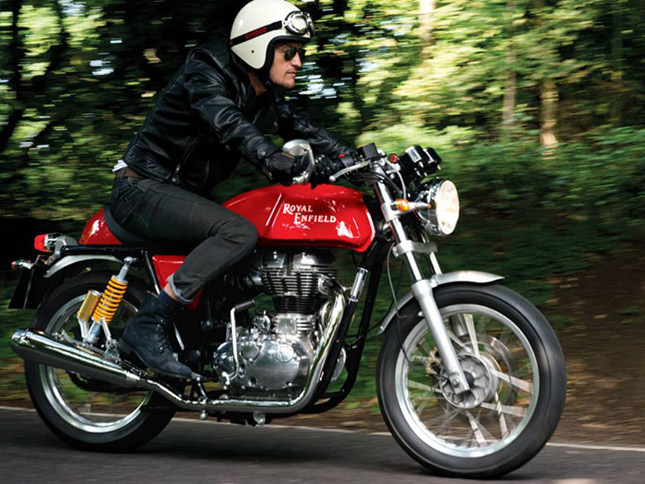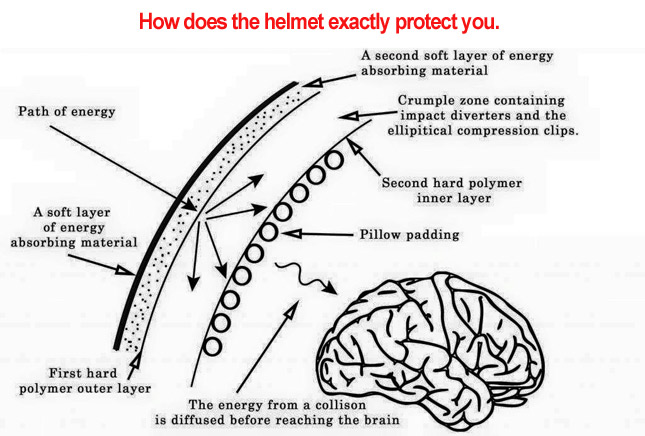Helmets have saved many a lives over the years. You might find some very rare cases where the helmet has been the reason or an accident of death of a person, but then it was one unlucky case which if you ask me does not hold much value if you look at it from the big picture point of view. It is just like chocolate, everyone likes it, but only some are allergic to it that does not make chocolate bad and no reason for others to not eat it. The same goes with helmets. If you are riding, no matter if it is a bike or a moped or a scooter, you have to use a helmet, period.
 But where the helmet really comes in its own is when there is a mishap. That is why the helmet is there for right? The helmet is supposed to protect your head. And that is exactly why one has to wear it. Tomorrow if you happen to have a bad crash and you are not wearing a helmet, consider it pretty much as your red carpet for a wine and dine with the Gods. Instead if you do wear the helmet and crash (does not mean you have to crash, it is just a worst case scenario), the helmet is going to make sure your head stays intact.
But where the helmet really comes in its own is when there is a mishap. That is why the helmet is there for right? The helmet is supposed to protect your head. And that is exactly why one has to wear it. Tomorrow if you happen to have a bad crash and you are not wearing a helmet, consider it pretty much as your red carpet for a wine and dine with the Gods. Instead if you do wear the helmet and crash (does not mean you have to crash, it is just a worst case scenario), the helmet is going to make sure your head stays intact.
So how does the helmet exactly protect you?
A helmet is nothing more than a hard outer covering and a soft inner lining. The hard cover makes sure the head is protected and the soft inner lining gives you the soft cushioning effect to absorb the shock of the crash. But it is all old technology. The newer helmets are much more precise crash tested and designed in such a way that only in case of a very major accident, the rider feels anything; else in all other cases the rider does not even feel a thing.
In the modern helmets, the outer part of the helmet is made of multiple layers of carbon fiber. This is extremely light and strong material which does not budge under real life stress of any kind. This keeps the helmet weight also to a minimum and yet the helmet won’t even catch a dent even with a hammer. Some helmets even use a material called Zylon which is a Kevlar equivalent material of which bulletproof vests are made. So in case of crash, there is the first top hard portion of the helmet that takes the impact hit. Below between the top hard section and the inner second hard section, there is a soft impact absorbing material layer provided so that most of the impact is absorbed by the layer and less than half of the impact will ever be forwarded to the rider. But that is not all.
So in case of crash, there is the first top hard portion of the helmet that takes the impact hit. Below between the top hard section and the inner second hard section, there is a soft impact absorbing material layer provided so that most of the impact is absorbed by the layer and less than half of the impact will ever be forwarded to the rider. But that is not all.
Below the second hard layer is something called a crumple zone which contains impact diverters. What they do is, the impact comes in a certain direction, and the elliptical compression clips in that region divert the impact blow in various directions. What this is, the impact diversion evens out the blow overall and reduces the magnitude to very less. So due to this even though the impact must have been really hard, the rider hardly feels a soft thud and hence his head is safely intact under the helmet.
And this is how the helmet saves so many lives in the numerous accidents that happen all across the globe. So now that we have covered this part, it is high time one gets the magnitude of seriousness why one has to use a helmet and hopefully they start using them on the road ASAP. Use a helmet, ride safe, ride hard and say tuned to BikesIndia for everything on two wheels.
By: Pratik Patole
 But where the helmet really comes in its own is when there is a mishap. That is why the helmet is there for right? The helmet is supposed to protect your head. And that is exactly why one has to wear it. Tomorrow if you happen to have a bad crash and you are not wearing a helmet, consider it pretty much as your red carpet for a wine and dine with the Gods. Instead if you do wear the helmet and crash (does not mean you have to crash, it is just a worst case scenario), the helmet is going to make sure your head stays intact.
But where the helmet really comes in its own is when there is a mishap. That is why the helmet is there for right? The helmet is supposed to protect your head. And that is exactly why one has to wear it. Tomorrow if you happen to have a bad crash and you are not wearing a helmet, consider it pretty much as your red carpet for a wine and dine with the Gods. Instead if you do wear the helmet and crash (does not mean you have to crash, it is just a worst case scenario), the helmet is going to make sure your head stays intact.So how does the helmet exactly protect you?
A helmet is nothing more than a hard outer covering and a soft inner lining. The hard cover makes sure the head is protected and the soft inner lining gives you the soft cushioning effect to absorb the shock of the crash. But it is all old technology. The newer helmets are much more precise crash tested and designed in such a way that only in case of a very major accident, the rider feels anything; else in all other cases the rider does not even feel a thing.
In the modern helmets, the outer part of the helmet is made of multiple layers of carbon fiber. This is extremely light and strong material which does not budge under real life stress of any kind. This keeps the helmet weight also to a minimum and yet the helmet won’t even catch a dent even with a hammer. Some helmets even use a material called Zylon which is a Kevlar equivalent material of which bulletproof vests are made.
 So in case of crash, there is the first top hard portion of the helmet that takes the impact hit. Below between the top hard section and the inner second hard section, there is a soft impact absorbing material layer provided so that most of the impact is absorbed by the layer and less than half of the impact will ever be forwarded to the rider. But that is not all.
So in case of crash, there is the first top hard portion of the helmet that takes the impact hit. Below between the top hard section and the inner second hard section, there is a soft impact absorbing material layer provided so that most of the impact is absorbed by the layer and less than half of the impact will ever be forwarded to the rider. But that is not all.Below the second hard layer is something called a crumple zone which contains impact diverters. What they do is, the impact comes in a certain direction, and the elliptical compression clips in that region divert the impact blow in various directions. What this is, the impact diversion evens out the blow overall and reduces the magnitude to very less. So due to this even though the impact must have been really hard, the rider hardly feels a soft thud and hence his head is safely intact under the helmet.
And this is how the helmet saves so many lives in the numerous accidents that happen all across the globe. So now that we have covered this part, it is high time one gets the magnitude of seriousness why one has to use a helmet and hopefully they start using them on the road ASAP. Use a helmet, ride safe, ride hard and say tuned to BikesIndia for everything on two wheels.
By: Pratik Patole











